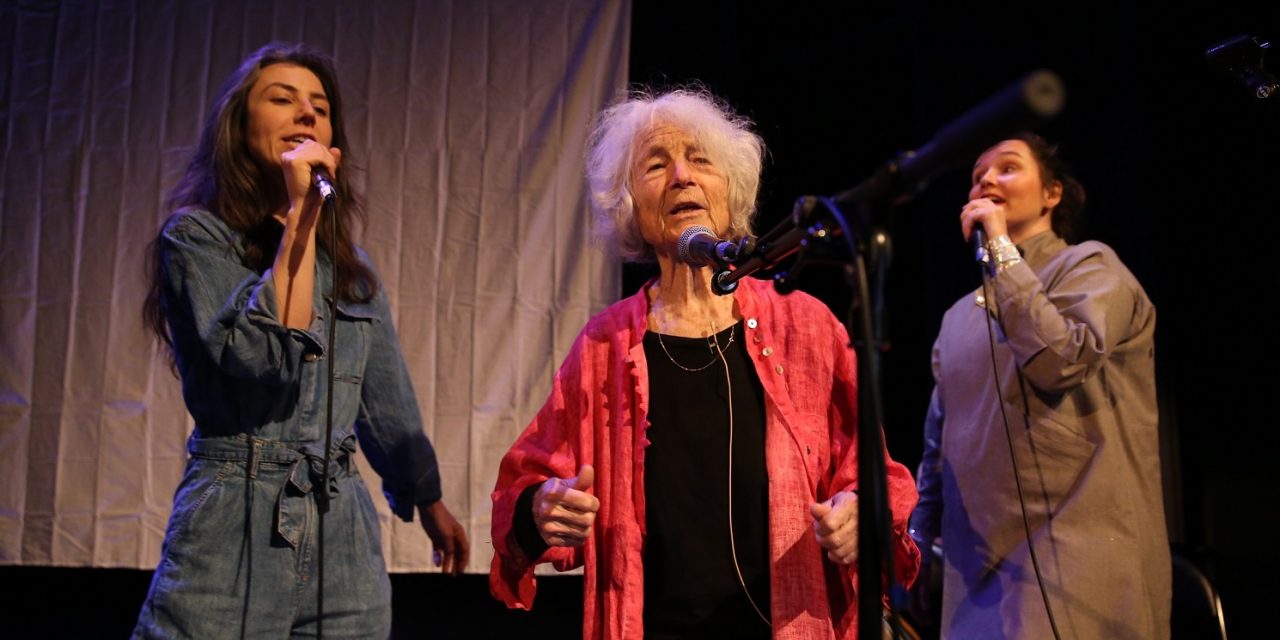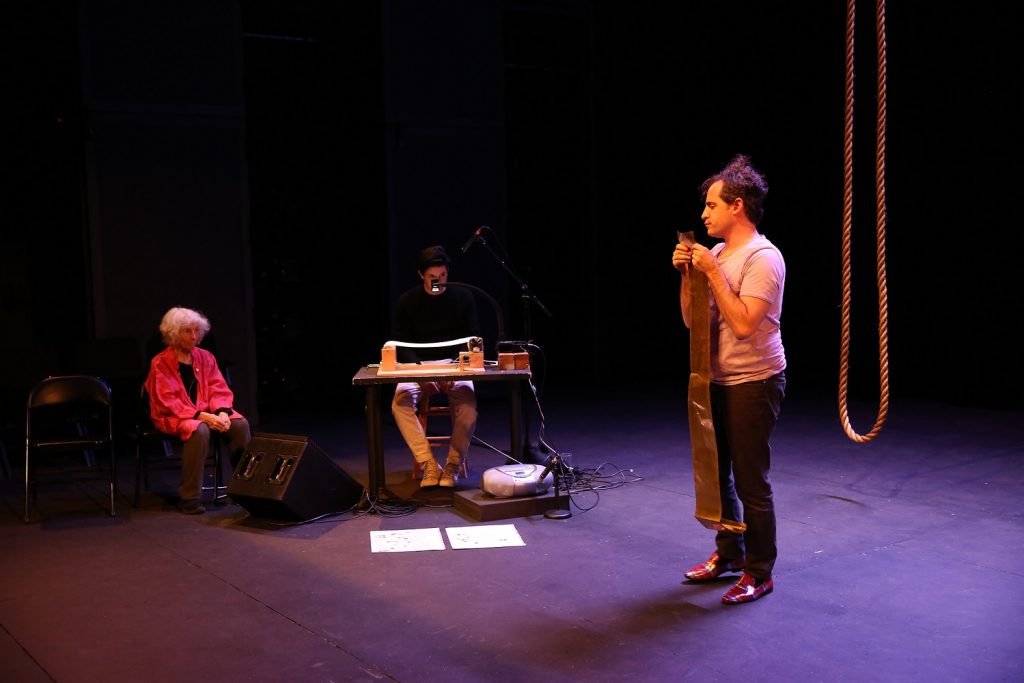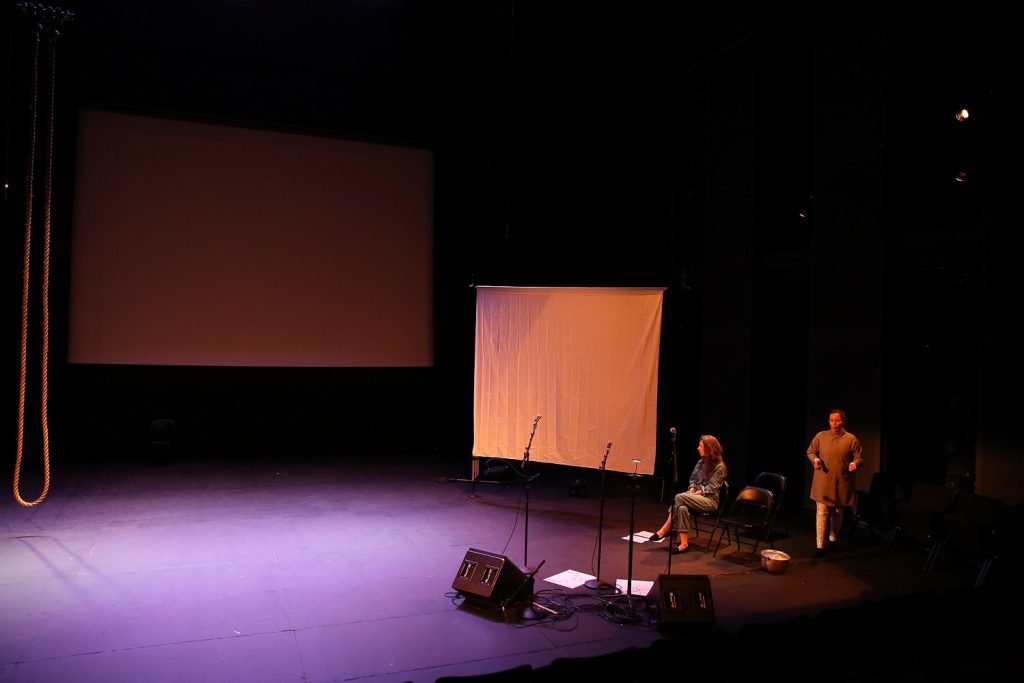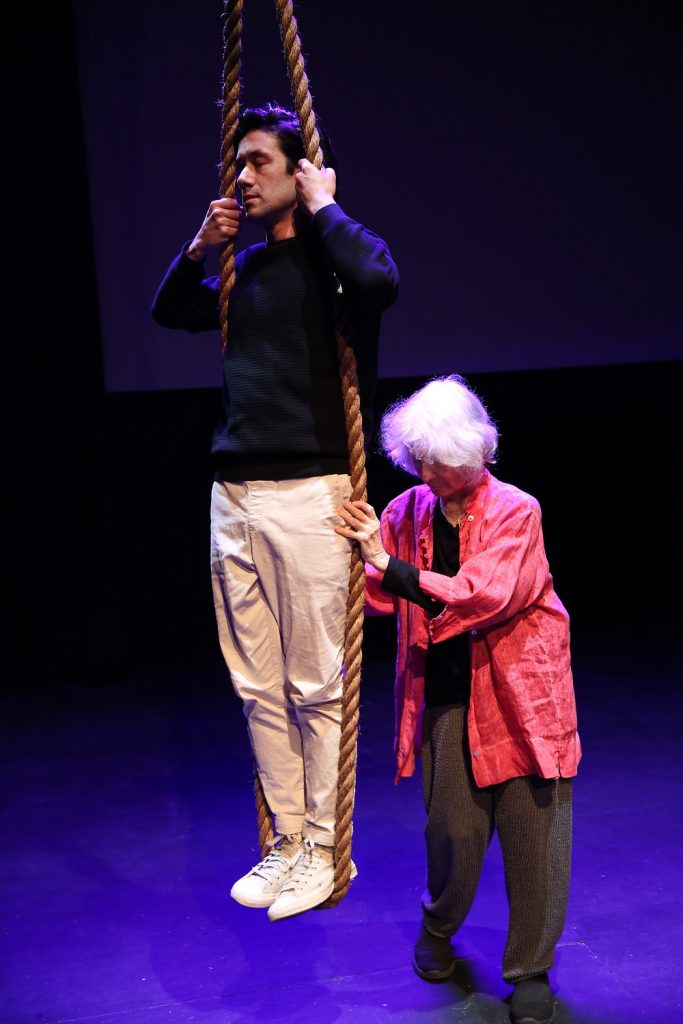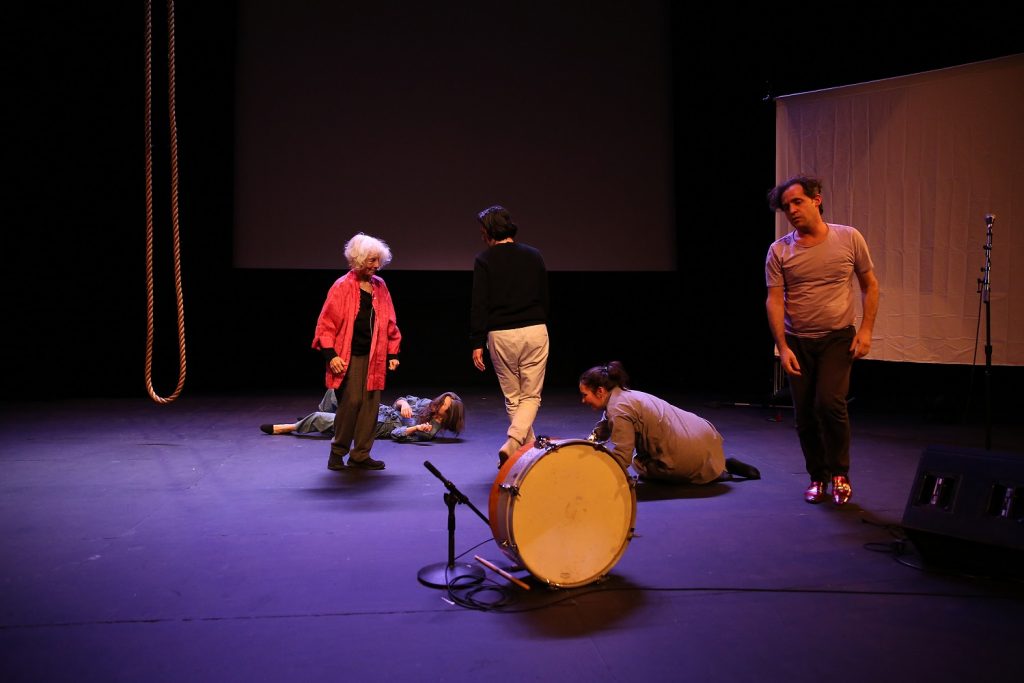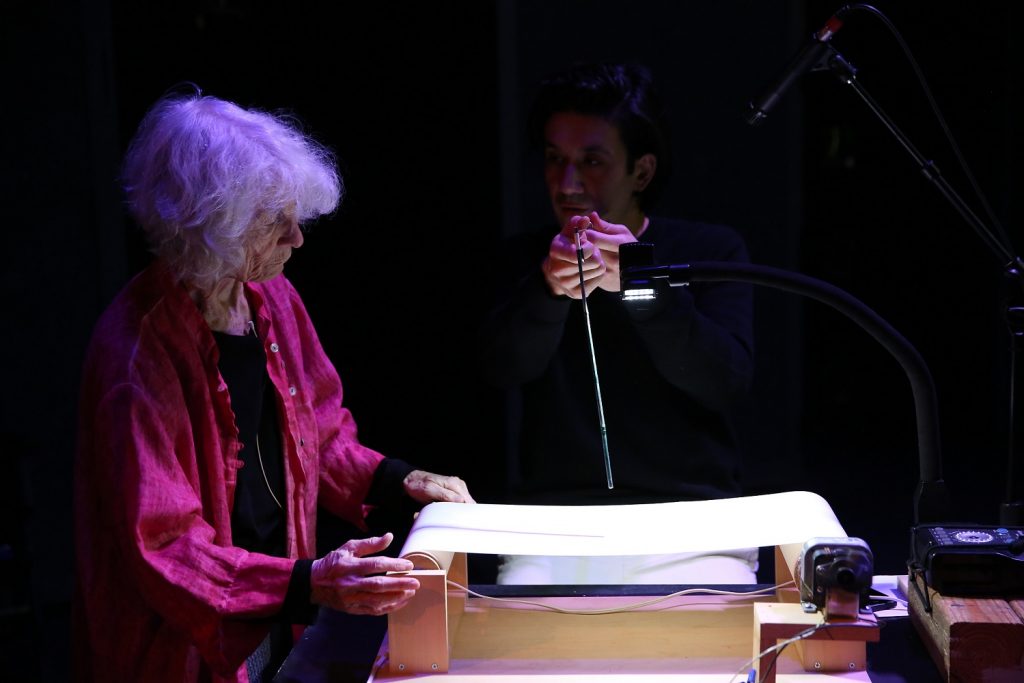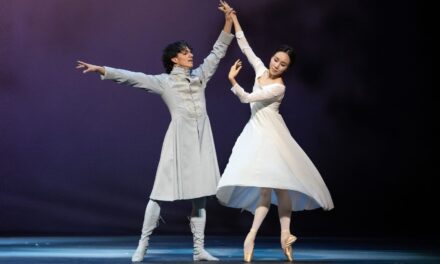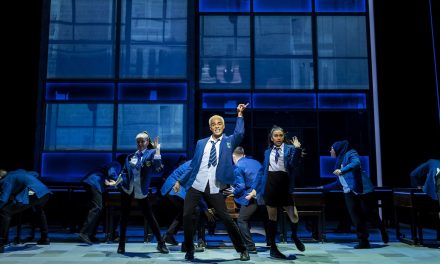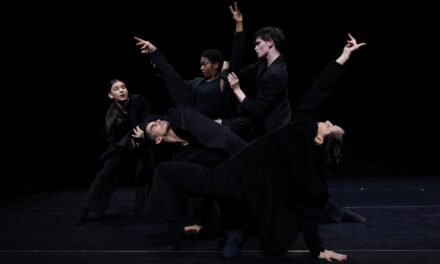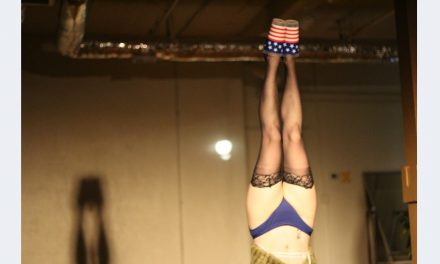In downtown Los Angeles, REDCAT’s unconventional programming is a breath of fresh air. The modular-style black box nestled in the Disney Hall block of downtown Los Angeles is pleasantly intimate but still makes room for a bar and lounge that hopes to connect artists. It constantly champions an almost jarringly diverse program of radical artists, allocating them resources and encouraging access to quirky new art for all audiences. “Cutting-edge” and “avant-garde” are the terms the press uses most when describing the venue.
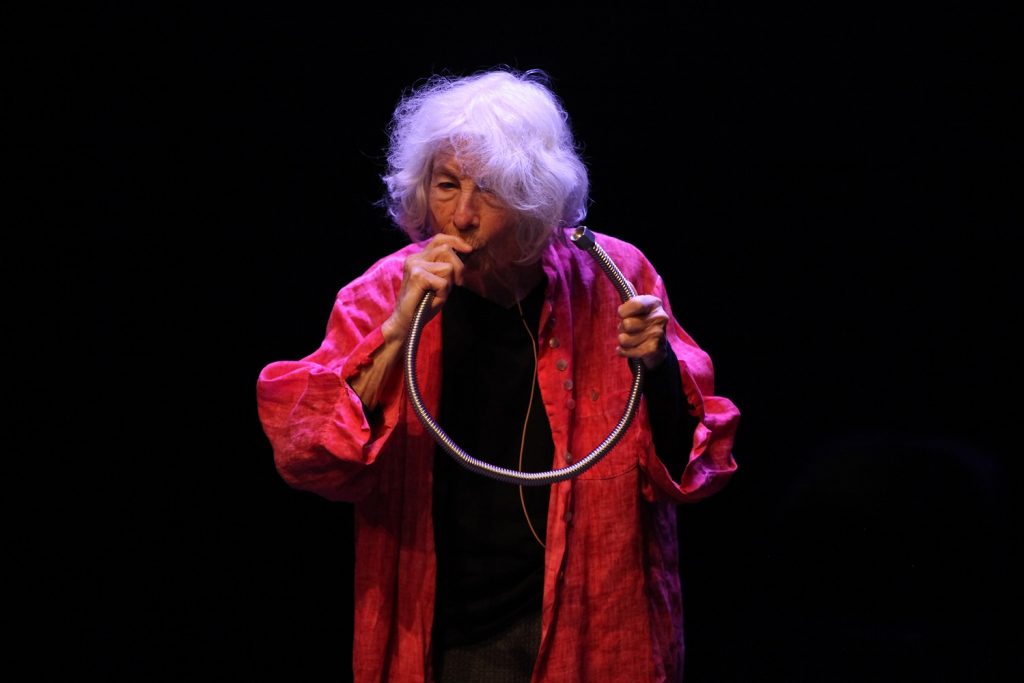
Simone Forti in Al Di La: An Evening of Sound Works by Simone Forti – Photo by Steve Gunther, REDCAT/CalArts
But enough about the theater; the point here is about a particular artist. Simone Forti is 84 years old. She is notorious for her work with Steve Paxton, pioneering postmodern dance and contact improvisation in ways that changed the game several times over. She is an expert in scoring, writing, and performance—among others. And somehow, she is simultaneously an indispensable chapter of the canon and an extreme, eccentric voice shouting through the others in this radical REDCAT space.
In Al Di Lá: An Evening of Sound Works at REDCAT on Saturday evening, Forti presented a collection of works with sound as their central element. Composer/performer Tashi Wada joined her—Wada’s label Saltern put out Forti’s album of the same name in 2018—along with musicians Julia Holter, Jessika Kenney, and Corey Fogel.
The evening begins with Largo Argentina, or Rome Cats (1968)—literally just made of 26 slides of cats projected onto a cotton sheet, and a fan that blows a wind chime into harmony. Forti is hoping to pull the wool over our eyes. This first piece ages itself: projections and slideshows are so humdrum, ordinary now, in a space like this. Largo lures you, the viewer, into comfort—you’re going to see an evening of performance art that once was, that shocked audiences at its premiere many years ago.
Then, the next eight works (all from the sixties) slowly work their way under your skin until you’re startled silly at intermission.
Molimo (1970—present) and Thunder Makers (1969) intersect as Forti and Fogel improvise on found object instruments, corrugated tube and metal sheet, for a symphony somehow both soothing and raucous. Censor (1961) wakes you from reverie, Jessika Kenney shaking a pot full of nails to drown out Fogel’s shout-singing. It’s disruptive, and indescribably leaves you wanting more after just one chorus. But we’re moving on to Face Tunes (1968), a mark of Forti’s mastery of scoring. In the program notes, she writes:
“At the time I made this piece I had been contemplating the phenomenon of how the face of someone one is falling in love with appears uncannily attractive.”
Wada tackles Face Tunes with a precise determination, playing the slide whistle/stylus contraption to follow the facial profiles drawn on a scroll, while Forti pulls the scroll along. The work is hypnotizing. In between profiles Holter and Kenney sing folk fables to life in Fire on the Mountain and Lullaby to an Ant, both from Hippie Gospel Songs (1969-70). Throat Dance (1968) gives Kenney a chance to flex her chops and exercise her vocal chords – the movement contained in the chambers of her throat.
Then, Accompaniment for La Monte’s “2 Sounds” and La Monte’s “2 Sounds” (1961) shakes the audience. I won’t spoil it, but 13 minutes and 22 seconds of La Monte Young with a gong and mallet eclipsed by Terry Riley with a tin can on the window forces you to ask questions. Forti sits center, a playfully wry expression on her face, and all you can do is wonder. People leave the theater. People plug their ears. Forti is radical and all she’s doing is sitting still. You’re stunned and you’re fidgeting and you’re unsure what’s happening to you. You’re asking yourself questions about her process; you’re asking yourself questions about her questions. And at the 13:22 mark, she ambles forward and says softly to the audience: “it’s intermission now.”
Over, Under and Around (1961) opens the second act—it’s one of my favorite Forti pieces and unfailingly entertaining. You want to get up and join in the fun. The latter half of the collection features several more songs from Hippie Gospel Songs (1969-70), Endless Summer in particular a curiously moving verse performed solo by Forti. Dance of the Happy Blind Dog (2006) makes you scrunch your nose with adoration, Bottom (1968) entices you back into your reverie, D’al di lá (1969-70) whisks you back into concert mode for the last few pieces. The program closes with Fool on the Hill and Italian Folk Song (1969-70), in which beautiful harmonies coincide with dissonant intervals over and over again. When it’s all through, you feel like you’ve been hit in the face with a beautiful, rewarding marathon. And you have twice as many questions as before.
I think she wants us to ask, to explore, to wonder—it seems to be what’s keeping her spry enough to roll around on the ground at a very sharp 84. Her curiosity is contagious, but it’s also its own sort of average genius. Perhaps she is bringing us to the theater to play durational games with her, to see how long we’ll last sitting still while she sits and stares back. Is it all just a funny game? Forti is certainly having fun.
Written by Celine Kiner for LA Dance Chronicle, February 3, 2020.
To learn more about Simone Forti, click here.
For more about what is happening at REDCAT, click here.
To see excerpts from an interview with Simone Forti at ARTFORUM, click here.
Featured image: Al Di La: An Evening of Sound Works by Simone Forti – Photo by Steve Gunther, REDCAT/CalArts

